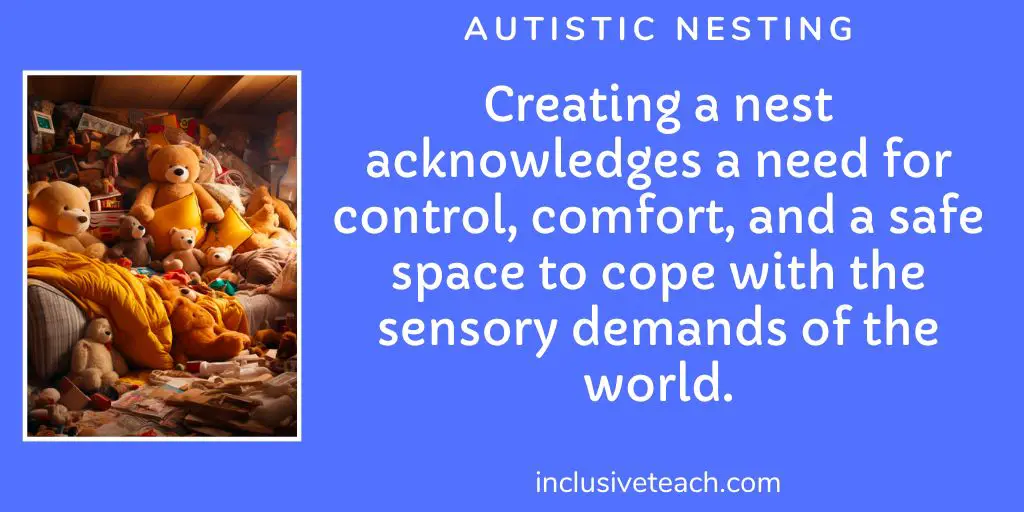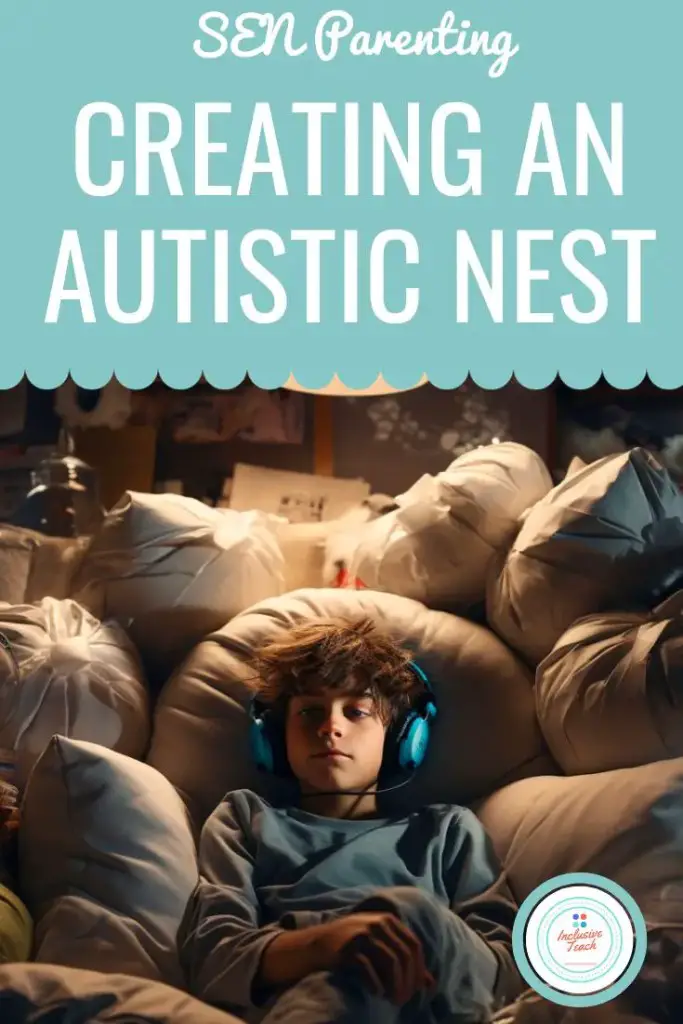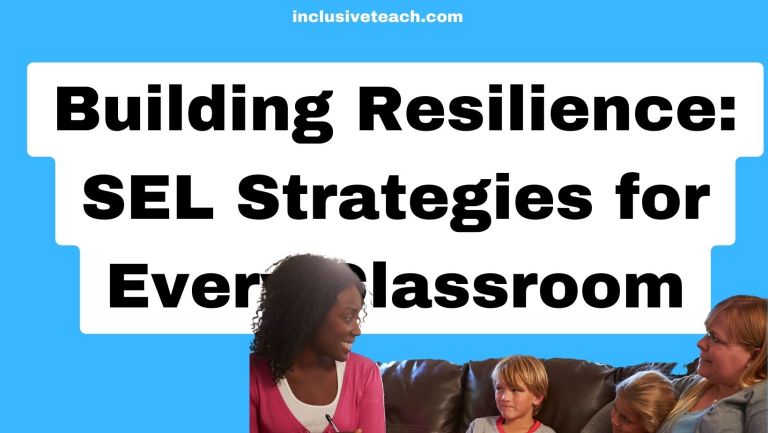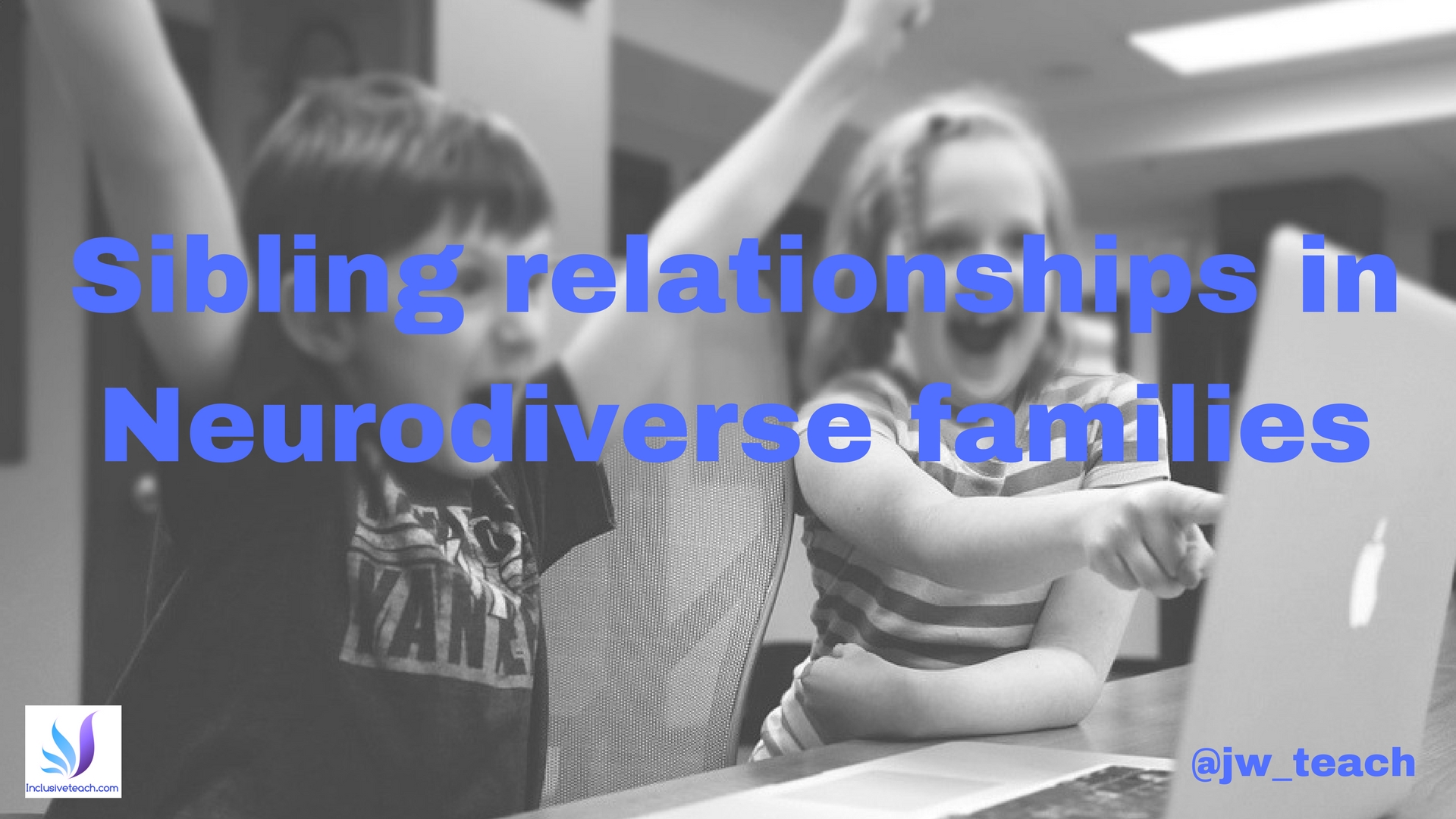What is Autistic Nesting?
Autistic Nesting: What Does It Mean & What Is It For?
Autism, a neurodevelopmental condition characterised by differences in social interaction and communication, is often accompanied by unique sensory experiences. One such behavior that has attracted limited attention but makes perfect sense is ‘Autistic Nesting’, a fascinating aspect of the autism spectrum experience. This article explores the concept of autistic nesting, its importance, and its variations among individuals.
The Concept of Autistic Nesting
Autistic nesting refers to the practice of creating a personal, comfortable, and safe space or environment that provides sensory comfort and a sense of security. This space — a ‘nest’ — is often characterized by the specific arrangement of items, such as blankets, pillows, favorite objects, or sensory toys, designed to create a cozy and soothing environment. The items used, and their arrangement, are typically personalized to the individual’s specific needs and preferences.
Nesting is not exclusive to autistic individuals; however, it takes on a unique significance in the context of autism due to the specific sensory and emotional needs often associated with autism.
Creating a Safe and Cozy Space
Many autistic individuals find comfort in creating a cozy space that meets their sensory needs. This process can involve using items like weighted blankets that provide whole-body pressure, a sensation that many autistic people find calming. Others might arrange pillows, blankets, and stuffed animals around them to create a sense of safety and comfort.
Some individuals go a step further, creating forts or designating special areas adorned with soft blankets, posters, and decorations that reflect their interests and personality. This careful arrangement of objects in the environment serves to establish a familiar, predictable, and controlled space that can serve as a retreat from the often overwhelming sensory experiences of the world.
A Sense of Security and Comfort
The act of nesting provides a sense of security and helps autistic individuals feel calm and centered in their space. Arranging their environment to align with their sensory preferences allows them to regulate their emotions effectively. This ability to control one’s surroundings can be especially beneficial for autistic individuals, given the frequent experiences of sensory overload and anxiety associated with the condition.
Nesting can also serve as a coping mechanism, providing solace and a sense of control in a world that can sometimes feel chaotic and overwhelming. It’s a way of self-care, enabling individuals to cater to their own needs in a way that makes sense to them.
Individual Experiences of Autistic Nesting & Personal Comfort
Autistic nesting can vary significantly among individuals. Some may feel a strong urge to nest and engage in activities like tidying, organizing, or rearranging furniture to create a sense of order and control. Others may find comfort in specific sensory elements, such as the scent of candles or the feel of specific fabrics.
Nesting can also be an expression of care for others. For instance, an autistic individual might create a comfortable nesting space for a loved one, using their understanding of sensory comfort to care for others, even if they don’t necessarily express typical nurturing behaviors towards human babies.

The personal nature of nesting means that what brings comfort and security can vary widely from person to person. Some individuals may prefer cozy and colourful spaces, while others prioritise cleanliness and organisation. Regardless of the specific preferences, the act of nesting allows individuals to create an environment that aligns with their unique sensory preferences, helping them feel at ease.
Conclusion
Understanding and respecting autistic nesting is essential in supporting individuals on the autism spectrum. It acknowledges their need for control, comfort, and a safe space to cope with the sensory demands of the world around them. As with any aspect of autism, it’s important to remember the adage, “if you’ve met one person with autism, you’ve met one person with autism.” The variations in autistic nesting reflect the rich diversity within the autistic community.








3 Comments